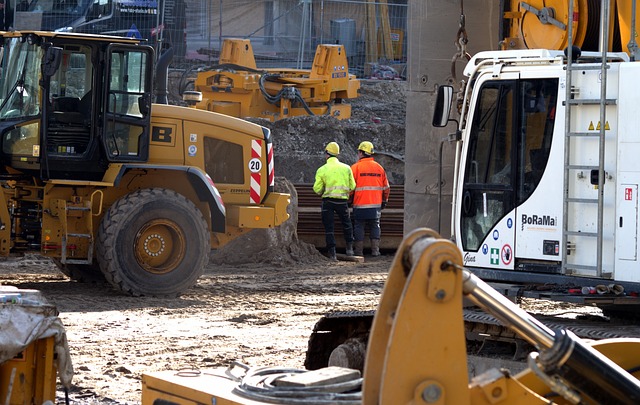In construction and excavation, utility mapping services using advanced GIS-based solutions and 3D technology are crucial for safe, precise identification of underground utilities (water, gas, electric, communication). This minimizes damage risks and delays. Professional utility mapping contractors specializing in both surface and subsurface mapping are vital for successful projects. Their use of tools like ground-penetrating radar enhances speed, reduces infrastructure damage, and provides valuable digital maps for future planning. Streamlined services revolutionize traditional mapping with accurate, up-to-date maps covering various utility lines, improving safety, design efficiency, collaboration, and project management. Selecting a contractor requires prioritizing experience, reputation, technology (GIS, 3D mapping), data management, quality control, and communication throughout the process.
In today’s digital era, construction and excavation projects demand precise planning and safe navigation of underground utilities to prevent costly delays and damage. Traditional methods of manual mapping are time-consuming and error-prone. This article explores the transformative power of streamlined mapping services, including modern utility mapping solutions like GIS, 3D scanning, and accurate subsurface utility mapping. By adopting these innovative approaches, construction and excavation teams can enhance efficiency, mitigate risks, and ensure successful project completion.
Understanding the Importance of Utility Mapping for Construction Projects
In the realm of construction and excavation, where precision and safety are paramount, utility mapping services play a pivotal role. Professional underground utility mapping ensures that construction projects proceed without disrupting critical infrastructure beneath the surface. Accurate identification and documentation of subsurface utility lines, including water, gas, electric, and communication cables, are essential for avoiding costly damage and potential safety hazards during excavation.
GIS-based utility mapping solutions, incorporating 3D utility mapping technologies, offer unparalleled accuracy and detail. These advanced tools allow contractors to visualize and understand the complex web of utilities beneath their projects, fostering informed decision-making and minimizing project delays. Engaging experienced utility mapping contractors specializing in both surface and subsurface utility mapping is crucial for ensuring successful construction outcomes.
Traditional Methods vs Modern Utility Mapping Solutions
In the realm of construction and excavation, navigating beneath the surface is as crucial as designing above it. Traditional methods of locating underground utilities often relied on time-consuming manual surveys and guesswork, leading to delays and potential damage risks. These methods included physical marker identification, site inspections, and expert consultations, which could be error-prone and inefficient.
Modern utility mapping solutions have revolutionized this process through advanced technologies such as GIS (Geographic Information System) utility mapping, 3D subsurface utility mapping, and accurate real-time data collection. Professional utility mapping contractors now employ precision tools like ground-penetrating radar, laser scanning, and GPS-enabled devices to create comprehensive digital maps of underground utilities. This shift towards digital solutions ensures faster project execution, reduces the chance of damage to critical infrastructure, and provides a reliable reference for future construction or excavation endeavors.
Key Features and Benefits of Streamlined Mapping Services
Streamlined mapping services offer a suite of advanced features that transform traditional utility mapping processes. These professional utility mapping solutions leverage cutting-edge technology like 3D utility mapping and GIS (Geographic Information System) integration to provide accurate and up-to-date subsurface utility maps. By combining aerial imaging, ground penetration radar, and other precision techniques, these services ensure comprehensive coverage of underground utilities, including gas, water, electric, and communication lines.
The benefits of streamlined mapping services are numerous for construction and excavation teams. First, they enhance safety by minimizing the risk of damaging critical infrastructure during digging, thereby reducing project delays and costs associated with utility strikes. Second, these accurate utility mapping solutions streamline planning and design phases, enabling efficient route optimization and informed decision-making. Additionally, real-time data access via cloud-based platforms facilitates collaboration among team members, improving overall project management and ensuring everyone works with the latest information.
Choosing the Right Utility Mapping Contractor for Your Project
When selecting a contractor for your construction or excavation project, choosing the right utility mapping services is paramount to ensure safety, efficiency, and compliance with local regulations. Look for companies specializing in subsurface utility mapping that offer both traditional and advanced technologies like GIS utility mapping and 3D utility mapping. Professional utility mappers employ precise methods to identify and map underground utility lines, providing accurate utility mapping solutions crucial for avoiding damage to critical infrastructure during excavation.
Consider their experience, reputation, and the scope of services they offer. Reputable contractors should be equipped to handle various projects, from residential to large-scale commercial developments. Inquire about their data management practices, quality control measures, and whether they integrate their utility line mapping data with GIS systems for comprehensive project planning. Ensure they provide detailed reports and transparent communication throughout the mapping process to align with your project timeline and budget.
In the realm of construction and excavation, efficient navigation beneath the surface is a game-changer. Adopting modern utility mapping solutions, such as 3D utility mapping and GIS-based systems, offers an innovative approach to project planning and execution. By leveraging accurate utility mapping services, teams can significantly reduce risks, streamline operations, and ensure successful outcomes. Choosing the right professional utility mapping contractor is crucial, enabling projects to navigate complex landscapes with confidence, ultimately fostering a safer and more productive construction environment.
